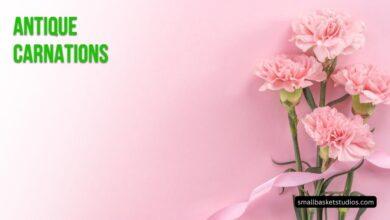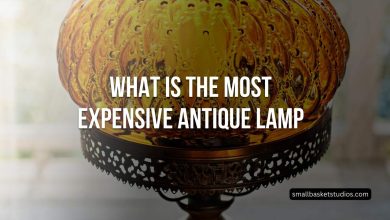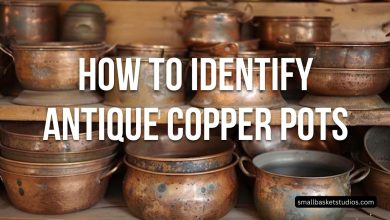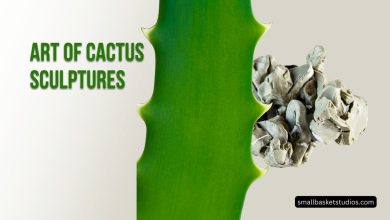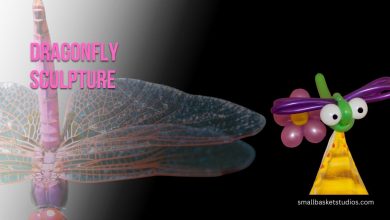Antique Bronze Paint Effect: Adding Weathered Charm with Paint
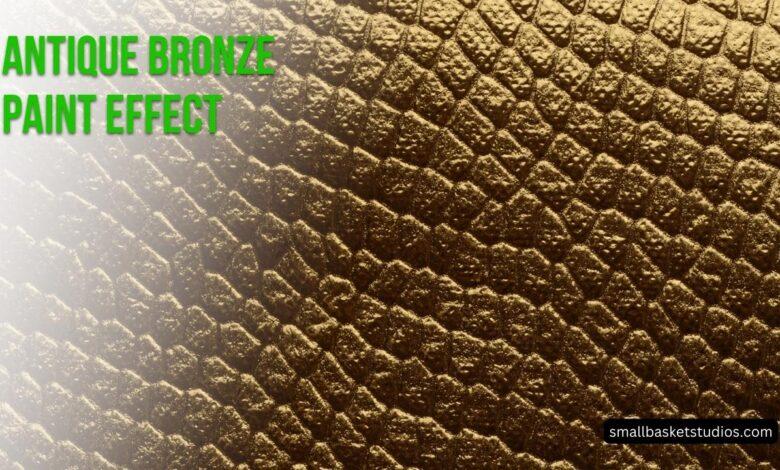
Antique bronze paint effects offer an elegant patina that instantly imbues any surface with a timeworn, weathered charm reminiscent of cast metal artifacts allowed to age gracefully across the centuries. Unlike messy chemical treatments or expensive custom casting, achieving this coveted aged bronze finish is surprisingly simple with the right decorative paints and clever techniques.
Antique Bronze Paint Effect
Whether refinishing tired furnishings or embellishing a focal wall, antique bronze painted accents add an intriguing texture and depth that feels pleasantly storied. Modern water-based bronze paints now allow both metal and wood surfaces to take on the burnished mystery of ancient artifacts. From subtle touches of verdigris character to dramatic oxidized bronze makeovers, this on-trend finish rewards do-it-yourselfers and working artists alike with sophisticated antiqued elegance.
Understanding Antique Bronze
What defines the signature antique bronze look? While pure bronze is an alloy of copper and tin, antique bronze paint effects aim to creatively capture:
- A rich, warm metallic sheen
- A mottled, variegated surface displaying areas of oxidation
- Hints of related patinas like deep copper, brown rust, turquoise verdigris and pale green corrosion
When metal bronze weathers naturally over decades or centuries, exposure to wind, moisture, pollution, soil and other environmental factors cause the surface to oxidize into unique layered patterns reflecting regional conditions. The resulting complex bronze finishes have an alluring timeworn quality that antique restorers highly prize.
Savvy painters can now recreate similar multi-toned antique bronze effects on both metal and wood without costly foundry pouring or extended outdoor exposure. Modern bronze specialty paints incorporate various metallic particles and chemical additives to speed realistic aging effects ranging from subtly mottled to intensely verdigris-laden.
Benefits of Bronze Paint Finishes
Antique bronze painted accents offer many artistic and practical advantages over solid cast bronze options or raw metal pieces left to slowly oxidize outside:
- More Affordable – High quality bronze paint costs far less than finessed cast bronze sculpture or ornamentation.
- Faster Aging Effects – Specialty water- or oil-based paints can replicate charming oxidized finishes in days instead of decades.
- Wider Surface Options – Paint opens up using antique bronze effects on diverse base materials, including wood, wrought iron, tin, aluminum, plaster, clay and more.
- Range of Sheens – From lustrous metallic brilliance to earthily matte patinas.
- Customizable Styling – Invent unique multi-layered tones mixing corrosion colors.
- Avoid Casting Hazards – Paint bypasses handling hot melted metal during manufacture.
- Lower Weight – Painted material weighs notably less than solid bronze equivalents.
- Simpler Maintenance – Touch up paint as needed instead of repatinating exposed bronze.
- Interior/Exterior Use – Modern exterior bronze paints survive sun and rain.
With the power to bestow weathered antiquity on everything from decorative picture frames and lighting to furniture and architectural accents, bronze specialty paint unlocks coveted old-world appeal through easy transformation.
How to Paint Antique Bronze Effects
The basic process of antiquing painted bronze effects involves first applying a rich base metallic bronze tone, then going back to selectively add areas of contrasting verdigris, rust and other oxidation accents:
- Prepare Surface
- Apply Base Coat
- Distress Accents
- Seal & Protect
More intricate multi-layering expands the range of possible finishes, especially by increasing depth and complexity. Always work in small sections for best blending control with natural variations. Here’s a closer look at essential steps for antiquing bronze painted finishes:
Prepare the Paint Surface
Proper surface prep helps any paint job last. For professional metal and wood painters, this means:
- Metal Surfaces – Degrease new metal with solvents to remove oily residue from manufacturing. Lightly sand glossy metal to rough up the sheen and give paint tooth to grip onto. Remove any loose flaking rust and wipe metal refinishing projects down with acetone before painting.
- Wood Surfaces – Sand unfinished wood smooth, wipe away any dust, then prime to limit absorption and block compounds that may bleed through paint over time.
- Previously Painted Surfaces – Make sure any old paint is firmly adhering with no blisters or cracks. Sand gently to rough up gloss enamels. Clean grease residue with TSP substitute before repainting.
- Plaster/Drywall – Let fully dry then sand lightly to open the pores for painting. Use spackle to fill any small holes or imperfections.
Professional painters often spray large jobs for fast full coverage. For antiquing small furniture or décor pieces, opt for hand brush painting using short controlled strokes and smooth flowing motion to minimize visible brush marks. Consider dipping for intricately detailed decorative pieces like wrought iron filigree or stamped tin panels.
Apply Rich Base Coat
Even first-time do-it-yourself painters can easily refinish small furnishings or accessory pieces thanks to specialty bronze paint’s built-in metallic particles and fast-acting chemical antiquing additives.
- Oil-Based Paint: Slow drying alkyd formulas better suit detailed antique-ing steps on metal and wood. Level nicely for brushwork. Require mineral spirits cleanup.
- Water-Based Acrylic: Quick dry time suits simpler base coat plus single pass antiquing. Clean up with soap and water. Limited metal use.
- Leafing Paint – Contains high levels of metal particles suspended in carriers ranging from lacquer to epoxy. Brush application orientates metals to layer thinly and “leaf” a bright reflective effect once the carrier dries fully.
A quality base bronze foundation creates depth for transparent dabbing glazes to come. Wherever the overlying accents get rubbed or scratched over time, the metallic base coat shows through attractively. Apply two thin coats rather than one heavy application for long-lasting durability and aesthetic dimension.
Popular base tone choices include:
- Rich Gold Bronze
- Old Brass Bronze
- Weathered Copper Bronze
- Brown Oil Rubbed Bronze
Distressed Accents
Here’s where antique bronze painted finishes truly come alive. Using glazing mediums designed for the base paint type, apply a thin transparent accent coating in key areas, then manipulate it while still wet to suggest captivating organic wear patterns:
- Dab corners and edges to hint at bumps and knocks over time.
- Trail trickles downward to convey rain rinsing down exterior surfaces.
- Smudge delicate trails with a rag corner to soften raised edges.
- Stamp or press found objects into wet glazes to imprint “scuffs”.
- Drag something sharp crosswise through still tacky glaze to “scratch” the surface history.
Then selectively brush on compatible accent glazing colors directly while wet for further dimensionality:
- Sage Green and Blue Green Verdigris (oxidizing copper)
- Sea Green Patina (weathering brass)
- Brown Red Rust Effects
- White Crackle Medium
Incorporate these steps in gradual build-up layers to enable the deepest multi-dimensional finishes brimming with hard-won character. Don’t overdo variegation right away. Study reference images to identify realistic wear patterns. Focused practice enhances intuitive blending skills over time.
Seal and Protect
Once fully cured, apply several thin final topcoats using high quality water-based or oil-based clear finishes suitable to the painted surface type to lock in artistic antiquing effects. This protective layer also helps the dimensional bronze beauty withstand regular cleaning, use and long-term environmental exposure.
Consider a matte or soft satin sheen varnish for a subtly lustrous glow. Higher gloss clear coats emphasize metallic brilliance. As needed over the years, spot fix nicks or scratches by dabbing a little matching base and glaze paint into affected areas, then re-clear coating for revived durability. With reasonable care, today’s advanced bronze paints maintain their convincing convincingly aged allure for years to come.
Antique Bronze Style Ideas
Beyond basic metal finishes, creative do-it-yourselfers adapt antiqued bronze specialty paint to all kinds of diverse surfaces and applications:
Wall Accents Paint a faux trompe l’oeil antique chest, frame an elegant wall mirror or highlight niches and architectural medallions.
Furniture & Décor Transform flea market salvage finds from humdrum to handsome museum quality antiquities.
Ornamental Ironwork
Upgrade interior and exterior railings, window grates, hinges and door knockers.
Fixtures & Lighting
Add elegance to sconces, chandeliers, lamps and custom fixtures with an aged bronze finish.
Sculpture & Statuary
Patina molded forms replicating lost wax castings for only a fraction of the cost.
Leather Bookbinding
Age beautiful leather book covers to resemble time-softened bindings in ancient classical libraries.
Wine Bottles & Barware
Make imperfect empty bottles into impressive pouring vessels with liquid bronze paints. Try gold, silver or copper leafing paint inside clear glassware like brandy snifters or champagne flutes.
Wood Signage
Highlight outdoor signage and street numbers on mission gates, garden plaques, beach houses or mountain cabins.
Canvas Art Painting
Incorporate rich antiqued metal textures into mixed media pieces.
Hobby Crafting
Embellish handmade jewelry, model trains, decorative boxes, candle holders, picture frames and more. The creative possibilities are truly limitless!
Antiqued Bronze Paint – Benefits Summary
Here is a summary of some of the key benefits of antiqued bronze paint:
| Benefit | Description |
|---|---|
| Unique Aesthetic | Creates an aged, weathered bronze look; more interesting than regular bronze paint |
| Hides Imperfections | The mottled, uneven finish helps hide any small dents, cracks, etc. in the surface |
| Great Contrast | Antiquing adds visual depth and makes details stand out more compared to flat bronze |
| Matches Decor | Works very well in vintage, rustic, steampunk, or antique-themed decors |
| Patina Protection | The patinated finish helps protect the bronze coating underneath from wear over time |
| Affordable | Much cheaper alternative to real cast bronze, but provides a bronze-like finish |
| Durable | Advanced acrylic formulas provide good adhesion and make the finish last longer than traditional antiquing methods |
| Variety | Antique look can be customized by controlling where and how much patina is applied |
I’ve summarized some of the key practical and aesthetic benefits that make antiqued or aged bronze paint finishes popular compared to plain bronze finishes.
Frequently Asked Questions
What are antique bronze specialty paints made of?
Today’s advanced acrylic and oil based bronze paints incorporate actual metallic particles like copper, bronze powder and mica flakes suspended in fast drying carriers to impart instant aged elegance in just one or two coats.
How do you antique bronze paint?
Applying bronze antiquing paint is much like artistically manipulating translucent oil glazes over dried acrylic underpaintings. First lay down a rich solid metallic base coat. Once cured, selectively dab small amounts of a thin accent glaze coating on top to suggest verdigris and rust patinas according to creative preference. Soften edges while still wet using fingers, rags or brushes for realistic wear effects. Repeat layers deepen the complexity.
What effect does antiquing bronze have?
Adopted from labor-intensive metal finishing terminology for chipping paint and rubbing buried metallic components partly exposed again, “antiquing” bronze painted effects aims to recreate the coveted variegated elegance of vintage furnishings and exterior architectural details allowed to age naturally over an extended period in variance to surrounding environmental conditions. The resulting delicate visual cacophony suggests gently storied wear rather than jarring damage or neglect.
What’s the difference between a patina and antique bronze effect?
- Patina refers to the natural series of oxidation color changes bronze and other metals undergo over decades of exposure to factors like carbon dioxide, moisture, acids, alkalis and other reactive substances. The Statue of Liberty provides a famous example.
- Antique bronze paint replicates similar multi-toned colored corrosion spots using much faster chemical interactions. Rather than waiting 50-100 years, painted metal effects age convincingly in mere days or weeks once painters manipulate the surface colors and details by hand.
Is antiquing the same as clear coating?
Antiquing refers specifically to applying accent glazing paints in semi-translucent layers over dried base bronze coats in the finishing stages to generate the illusion of aged patina and wear effects. Clear coating refers to applying one or more protective sealing top coats of resin varnish, lacquer, enamel or urethane across the fully cured underlying antiqued paint layers. This final step helps antique bronze painted surfaces better withstand corrosion, scratches, UV damage and cleaning over time.
Conclusion
Beyond basic metal protection, antique bronze specialty paints offer savvy do-it-yourself home decorators, sculptors and craft artisans an accessible shortcut for replicating the elegant enigma of weathered history using any base material imaginable. Just a little creativity coupled with quality materials lets you transform any flea market find or bare surface into intriguing metal formations and accents rivaling those installed centuries ago.
So reinvent tired furnishings, illuminate pedestrian rooms or frame stunning focal points with neoclassical elegance using painterly tricks to instill the irresistible ambiance of a coveted lengthy past after mere days of graceful aging effects. It’s now easier than ever to infuse living spaces and cherished belongings with an alluringly antiqued golden glow.
